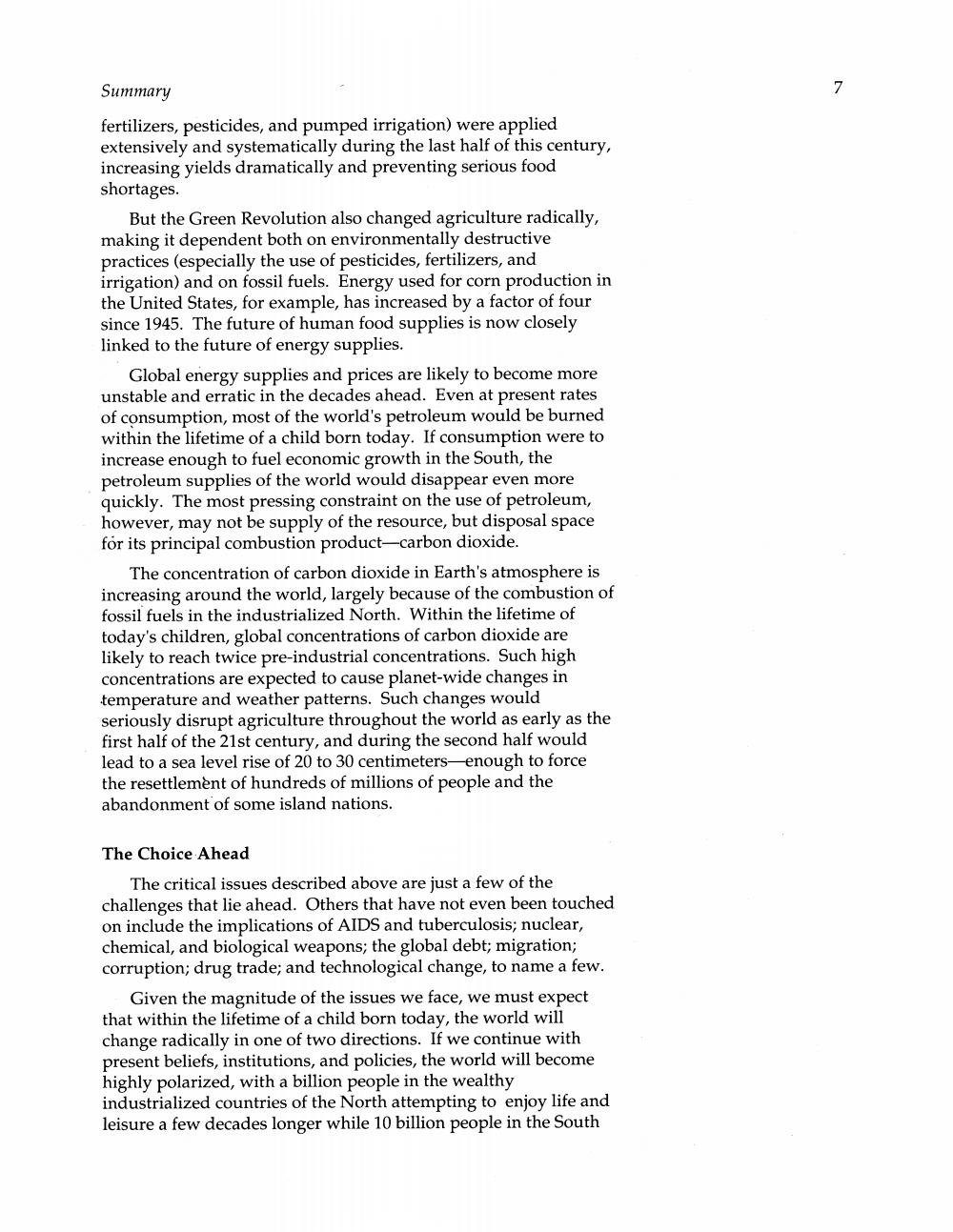Book Title: Letter To Our Spiritual Leaders Author(s): Publisher: View full book textPage 6
________________ Summary fertilizers, pesticides, and pumped irrigation) were applied extensively and systematically during the last half of this century, increasing yields dramatically and preventing serious food shortages. But the Green Revolution also changed agriculture radically, making it dependent both on environmentally destructive practices (especially the use of pesticides, fertilizers, and irrigation) and on fossil fuels. Energy used for corn production in the United States, for example, has increased by a factor of four since 1945. The future of human food supplies is now closely linked to the future of energy supplies. Global energy supplies and prices are likely to become more unstable and erratic in the decades ahead. Even at present rates of consumption, most of the world's petroleum would be burned within the lifetime of a child born today. If consumption were to increase enough to fuel economic growth in the South, the petroleum supplies of the world would disappear even more quickly. The most pressing constraint on the use of petroleum, however, may not be supply of the resource, but disposal space for its principal combustion product-carbon dioxide. The concentration of carbon dioxide in Earth's atmosphere is increasing around the world, largely because of the combustion of fossil fuels in the industrialized North. Within the lifetime of today's children, global concentrations of carbon dioxide are likely to reach twice pre-industrial concentrations. Such high concentrations are expected to cause planet-wide changes in temperature and weather patterns. Such changes would seriously disrupt agriculture throughout the world as early as the first half of the 21st century, and during the second half would lead to a sea level rise of 20 to 30 centimeters--enough to force the resettlement of hundreds of millions of people and the abandonment of some island nations. The Choice Ahead The critical issues described above are just a few of the challenges that lie ahead. Others that have not even been touched on include the implications of AIDS and tuberculosis; nuclear, chemical, and biological weapons; the global debt; migration; corruption; drug trade; and technological change, to name a few. Given the magnitude of the issues we face, we must expect that within the lifetime of a child born today, the world will change radically in one of two directions. If we continue with present beliefs, institutions, and policies, the world will become highly polarized, with a billion people in the wealthy industrialized countries of the North attempting to enjoy life and leisure a few decades longer while 10 billion people in the SouthPage Navigation
1 ... 4 5 6 7 8 9 10 11 12 13 14 15
